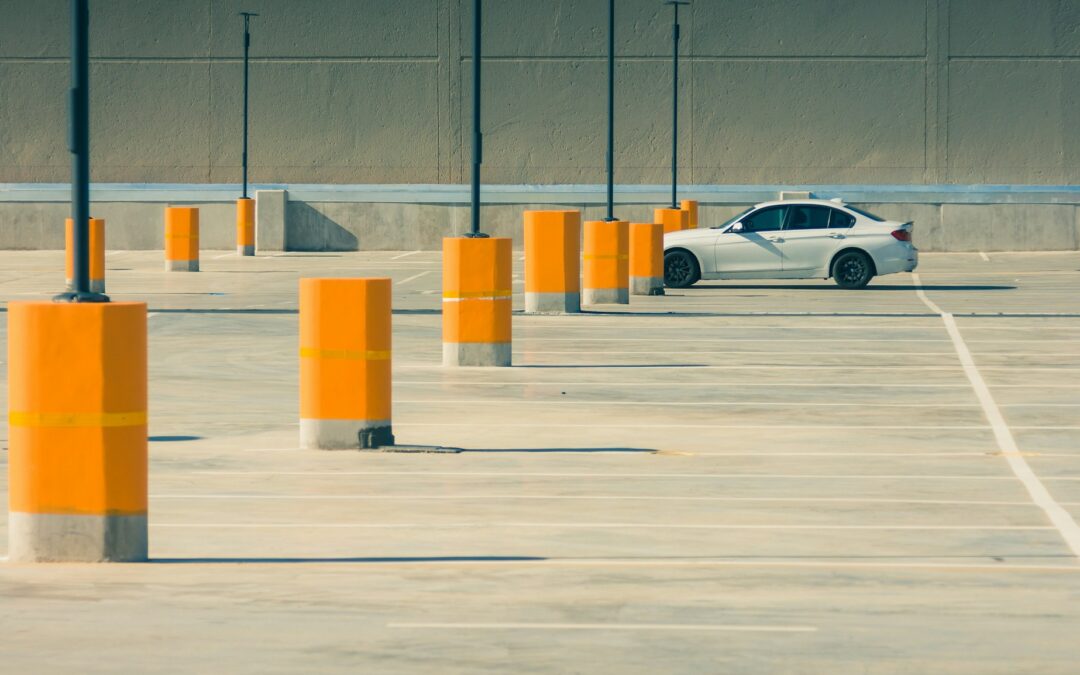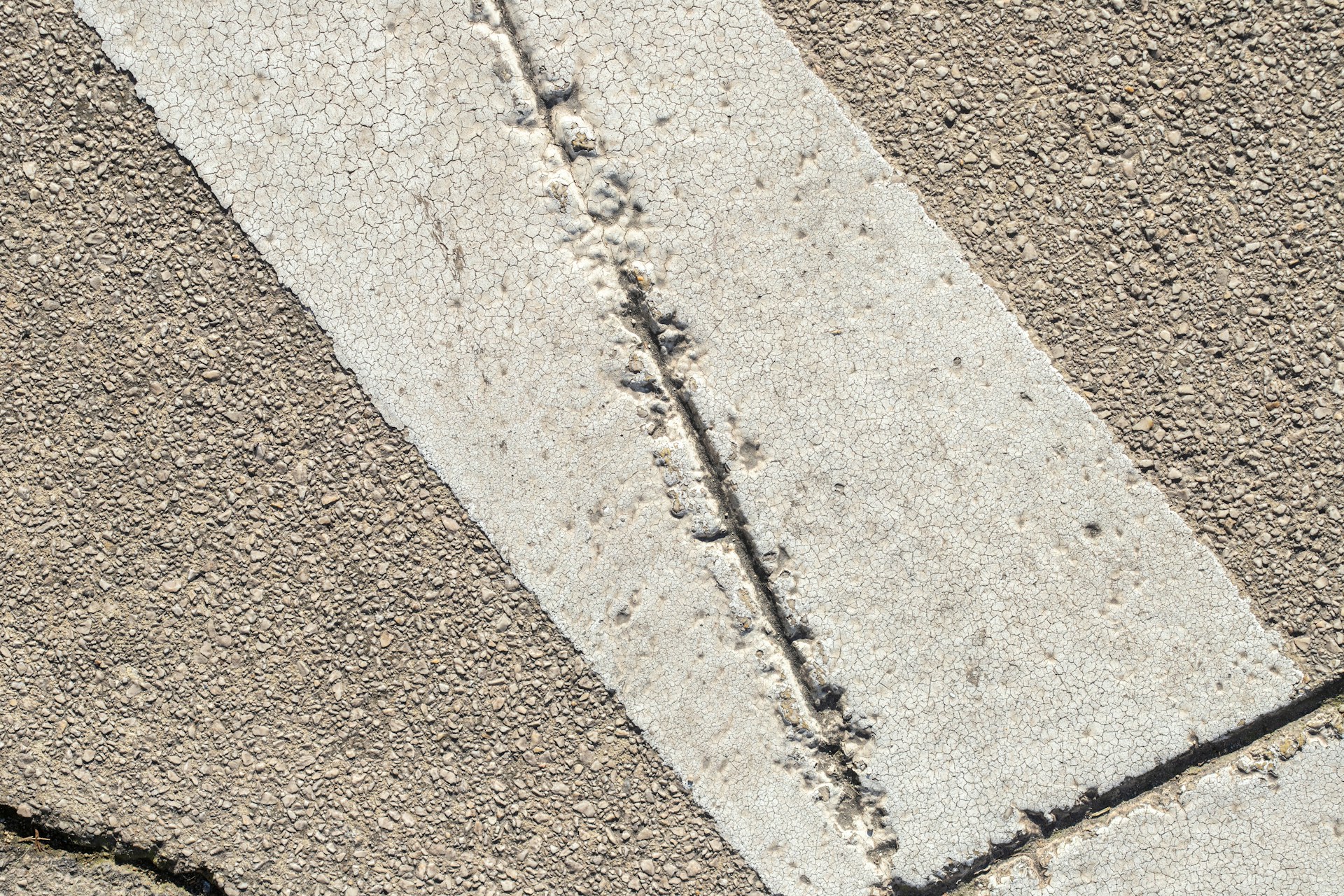Uneven striping in a commercial parking lot might not seem like a big deal at first glance, but it has a way of creating real problems. When lines are faded, crooked, or spaced poorly, drivers get confused. That confusion can slow down traffic, cause near-misses, and make the whole area feel unsafe. If people can’t easily figure out where to park or how to navigate, they’re less likely to return. That’s something most property managers want to avoid.
Keeping striping sharp and aligned plays a big role in how a lot functions. It keeps cars in place, helps guide traffic, and shows clear boundaries. But striping can wear down quicker than expected, especially in areas with heavy use or tough weather. Over time, if left unchecked, small problems can turn into major headaches. Identifying the warning signs and fixing the issue the right way helps keep your lot clean, safe, and easy to use.
Identifying The Issues
Before fixing anything, you’ve got to spot the trouble first. Uneven striping isn’t always about crooked lines. Sometimes it’s more subtle, like a difference in brightness between one section and another, or varying widths that make spots feel too cramped for larger vehicles.
Here are a few signs your parking lot striping may be uneven or failing:
– Parking stalls don’t line up properly from one row to the next
– Angled stripes point in slightly different directions across the same area
– Some lines appear thicker, lighter, or shorter than others
– There’s water pooling along certain lines, hinting at low ground causing application issues
– Vehicles are often parked slightly outside the lines or at odd angles
When striping is off, traffic doesn’t move the way it should. Drivers get turned around or park too close to each other. That can lead to cars getting dinged, blocked loading zones, and even unsafe routes for pedestrians. If someone’s rushing, they might not notice that the one-way arrows are directing them into oncoming traffic because they’re worn or angled incorrectly.
Over time, uneven markings can also affect the surface underneath. For example, repeated pressure in areas with tight turning space causes quicker wear on the pavement. Without enough space between lanes or stalls, you’ll see tire marks, crumbling edges, and oil buildup faster in certain spots. These surface issues then make restriping even harder later.
Spotting these problems early keeps costs down and keeps the lot running like it should.
Causes Of Uneven Striping
Understanding why your striping looks uneven is the first real step toward getting it fixed for good. People usually notice the crooked lines, but not what caused them. In a commercial lot, a few things tend to show up again and again.
- Weather Conditions: Extreme heat can cause paint to blister or crack. On the other end, colder weather makes certain paints dry too slowly or not at all if applied the wrong way. Rain or humidity can lead to streaking or color changes before the paint even settles.
- Bad Surface Prep: If dirt, oil, or loose gravel is still on the ground before applying paint, it won’t stick the way it should. What might look fine at first can soon start chipping or peeling. In some cases, a power wash isn’t enough, especially when older layers weren’t removed first.
- Incorrect Tools or Speed: Striping machines don’t like uneven surfaces. If a lot has dips or high spots and the crew doesn’t adjust for them, you’ll get waves and gaps. Moving too fast when applying makes the lines thin. Going too slow could leave thick, smeared patches.
- Heavy Traffic Wear: Large delivery trucks turning in tight spaces or parking diagonally all day can wear out certain parts of the lot faster than others. That kind of repeat movement breaks down striping in high-use zones quickly. If those spots aren’t touched up regularly, they’ll end up looking completely different from the rest of the lot.
Take an example of a grocery store lot that gets used day and night. You might see striping near the loading zone fading faster than the customer parking spaces. Delivery trucks and carts drag across the same lines each day, grinding the paint off little by little.
You could try patching certain parts, but unless the surface is even and prepped right, the results won’t match. That’s why fixing these issues is about more than just slapping on a new coat of paint. You need to fix what caused the unevenness in the first place.
Steps To Fix Uneven Striping
Getting rid of uneven striping and redoing it the right way takes proper planning. It’s more than just painting over the old lines. You don’t want to repeat the same issues that caused things to look bad in the first place. Taking the right steps now saves time and money later.
Start by preparing the surface. Before any paint goes down, the lot needs to be cleaned thoroughly. That means sweeping off rocks and dirt and removing any oil spots. Old, cracked paint may need to be ground off if it’s flaking or built up too thick. Painting over that could make the new lines bubble or wear away fast.
Once the surface is ready, picking the right materials and equipment is key. Different lots need different types of striping paint based on the surface and use level. Some traffic paints are better for short-term use, while others are built for high-traffic areas. You also need reliable striping machines that apply paint evenly and consistently, especially on uneven ground.
Application is where everything comes together or falls apart. Paint should go down in straight, even strokes. Crews should measure and chalk out guidelines before tapping the nozzle. On lots with complex layouts or faded patterns, matching what’s already there can be tricky. Don’t guess. Get the layout squared first. Even layers, consistent spacing, and sharp corners help each stall look clean and uniform. If arrows, symbols, or crosswalks are involved, stencils and careful spacing make all the difference.
This step isn’t where you rush. Messy striping slows down business and gives people a bad impression. The focus should be on alignment, color clarity, and long-term durability. Doing it right the first time means fewer complaints and fewer repaint jobs down the road.
Maintaining Your Parking Lot Striping
Once your parking lot has been cleaned up and restriped, the work doesn’t end. To keep things looking sharp and working as they should, you’ve got to stay on top of upkeep. Lines fade with time, especially when exposed to sunlight, rain, snow, or daily traffic patterns. Without a plan, you’re back to square one faster than expected.
Here are a few ways to keep striping in good shape:
– Walk the lot every couple of months and take note of faded or chipped areas
– Touch up problem spots before they get too worn to follow
– Schedule a full re-striping before the paint fades completely rather than waiting until it’s unreadable
– Pressure wash regularly to remove dirt, oil, and surface buildup that can hide or damage lines
– Check that signs, arrows, and handicap symbols are still clear and easy to follow
Some weather wear is unavoidable, but reacting early keeps the space clean and prevents confusion. If your lot sees a lot of use from trucks or delivery services, you might need to check things more often. Plan maintenance around your location’s weather cycles so you don’t end up repainting after every storm or freeze.
If you notice patterns where lines fade faster in certain areas, it may be time to revisit the paint type or application method. Addressing weaknesses instead of constantly patching them keeps the space more manageable and improves its overall safety and flow.
Better Parking Experience For Everyone
Fixing striping issues does more than just improve the look of a parking lot. It makes it usable, safe, and easy to navigate. When lines are clear and even, drivers know where to go, people can walk across lanes more confidently, and traffic flows in a more organized way. Clean layouts leave fewer chances for fender benders, blocked lots, or confusing exits.
Property managers and business owners who have a good grip on striping maintenance stay a step ahead of problems. When striping is done correctly and maintained well year-round, it reflects on the whole property. Customers and visitors notice. It sends a message that the place is managed with care and attention.
For commercial spaces, every detail counts. Striping may seem simple, but it plays a big part in making everything run smoother. With the right help and a consistent approach, it’s one of the quickest ways to boost both safety and appearance.
Boost the safety and flow of your parking area with help from Hyperformance Traffic Safety Supplies. Whether you’re resurfacing your lot or reworking your layout, we offer reliable materials and tools to get the job done right. If you’re tackling a project that involves commercial parking lot striping, we’ve got the products you need to keep things sharp, clear, and compliant.




